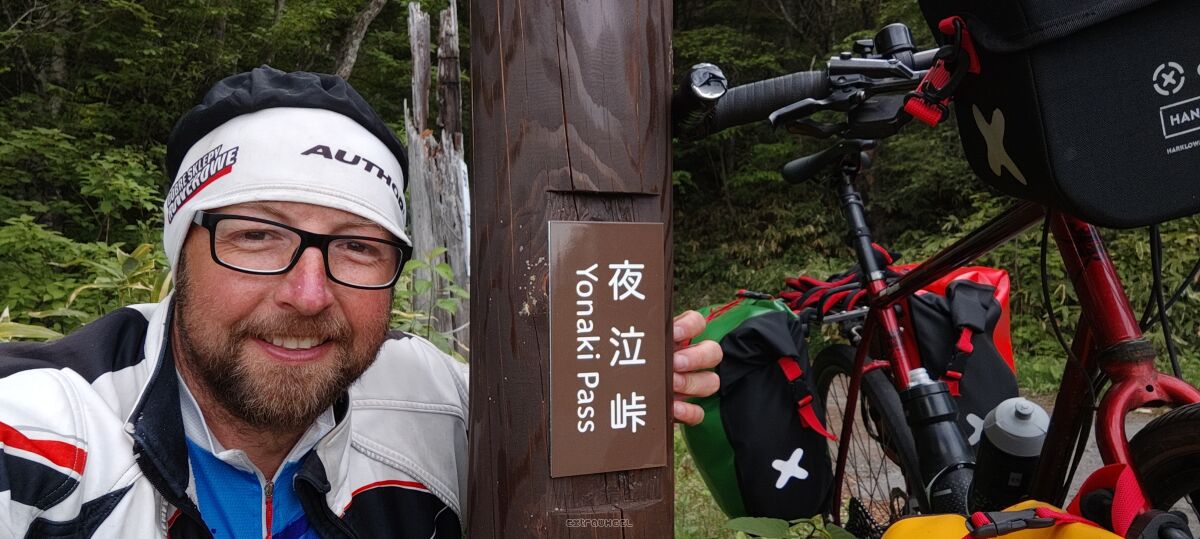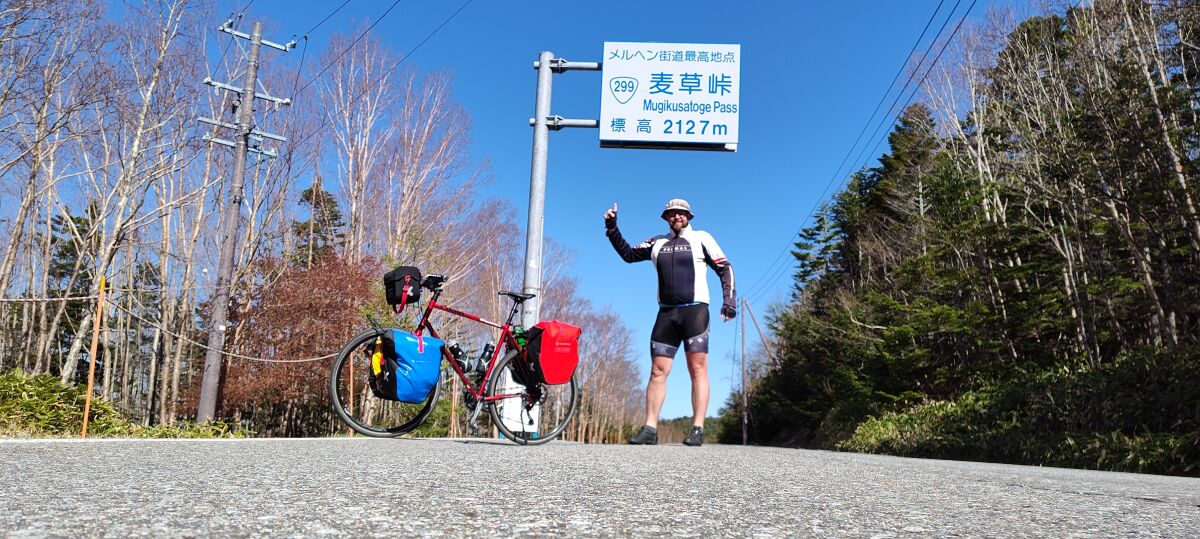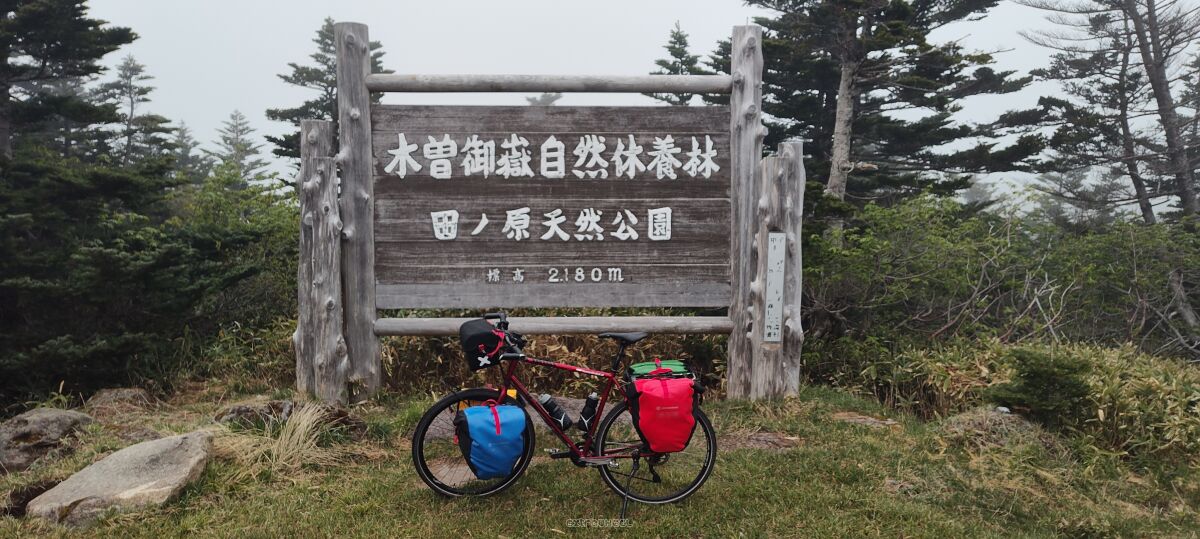During the "Japan Expedition 2023," I had the opportunity to explore the fascinating and contrasting landscapes of Japan. This adventure marked my second cycling expedition of the year, following a winter trip to Alaska in March. Japan's unique geographical and cultural diversity made this journey exceptional.
My goal was to conquer numerous ascents at different altitudes - 2000, 3000, 4000, and 5000 meters above sea level. Before arriving in Japan, I had already completed 503 ascents worldwide, but I aimed to continue this challenge on Japanese routes. In the Japanese Alps, I successfully tackled 16 ascents exceeding 2000 meters.
Over 28 days, I covered a distance of 2462 kilometers exclusively on my bicycle. While not every day involved cycling, with two travel days and several rest days to avoid rainy weather, my daily average distance over 23 cycling days was an impressive 112 kilometers. I encountered elevations totaling at least 30,000 meters, averaging 1300 meters of ascent daily, often exceeding 2000 meters.
I focused my journey on Honshu Island, Japan's largest and most populated island. In the Japanese Alps west of Tokyo, I explored three mountain ranges - Southern, Central, and Northern, as well as the massive Mount Fuji volcano. Here, I found numerous ascents exceeding 2000 meters. Notably, Japan lacks asphalt roads above 3000 meters, with Norikura Skyline Road at 2716 meters as the highest asphalt road.
My expedition commenced at Mount Fuji, Japan's iconic symbol, towering at an impressive 3776 meters. I encountered three main routes to altitudes above 2000 meters: Mount Fuji Skyline (2378 m), Fuji Subaru Line (2304 m), and Fuji Azami Line (2000 m).
Accommodation primarily consisted of camping in remote mountain trails, forests, parking lots, and rest areas. While hostels were an option, I often chose camping due to the cost, with hostel dormitory rates averaging around 3000 yen or approximately 90 złotys per night.
One of the most memorable aspects of the journey was experiencing Japanese cuisine. I savored a variety of dishes, including sushi, ramen, tempura, okonomiyaki, and more. Japanese cuisine proved not only delicious but also healthy and diverse. Trying local delicacies and traditional beverages like matcha green tea and sake was a highlight.
Japan's traffic proved exceptionally safe and organized, with drivers consistently following rules and respecting cyclists, ensuring a comfortable journey along national roads. The well-maintained road infrastructure facilitated easy cycling.
Throughout the expedition, I visited numerous culturally significant sites, including Buddhist and Shinto temples, castles, traditional villages, and museums, deepening my understanding of Japan's heritage. Local residents were consistently friendly and helpful to foreigners.
This expedition provided an excellent opportunity to explore Japan's culture, traditions, and nature. Despite the challenges, every moment of the journey was unforgettable.
Expedition Statistics:
- Covered 2462 km cycling across Japan.
- 28 days of the expedition, including 22 days of cycling.
- Impressive daily average distance of 112 km.
- Minimum cumulative elevation gain of at least 30,000 meters.
- Conquered 16 ascents above 2000 meters above sea level.
- Tackled 11 ascents below 2000 meters above sea level.
- Highest ascent of the expedition: Norikura at 2716 meters above sea level.
- Most challenging ascent: Subashiri Fuji Road.
- Three rainy days.
- Temperature range from 4°C to 29°C.
- Expedition cost ranged from 7,500 to 8,000 złotys.
During my Japan cycling expedition, I opted for minimalist gear to maintain agility and freedom of movement. I chose an Author Ronin gravel bike, which performed excellently on Japan's diverse terrains. I also relied on four Extrawheel Biker bags, a handlebar bag, and an MSR Elixir 1 tent for comfortable nights on the trails. The Mammut Nordic OTI Spring sleeping bag kept me warm during cooler nights.
Additionally, essential equipment included the Motorola Thinkphone smartphone for navigation, communication, and documenting my journey. The Suunto 9 Peak Pro sports watch helped track training metrics and time management. I also carried a compact Sony HX60 camera to capture the breathtaking landscapes and moments of the expedition.
The primary goal of my expedition was to conquer Japan's highest mountain passes and roads. Here is a list of these impressive achievements:
- Mount Fuji Summit - 3776 meters - reaching the summit itself
- Mount Fuji Skyline - 2378 meters
- Fuji Subaru Line - 2304 meters
- Fuji Azami Line - 2000 meters
Northern Alps - Hida:
- Shirakaba Pass - 1641 meters
- Norikura Skyline Road - 2790 meters above sea level - starting from Hirayu
- Norikura Skyline Road - 2790 meters above sea level - Maekawadoo Bridge
- Abou Pass - 1796 meters
- Tateyama Kurobe Alpine Route - 2427 meters
- Kurobishidaira Ski Station - 1676 meters
- Tsugaike Sanso - Ski Lodge - 1856 meters
- Otomiyama Pass - 1530 meters
- Mount Yakebitai Ski Station - 2004 meters
- Shiga Kogen Ski Resorts - below 2000 meters
- Kasatake Pass - 1903 meters (Route 66)
- Mount Yokote - 2307 meters
- Asama Shirane Shiga Sawayaka Highway - 2022 meters + Yugama Crater Lake
- Japan's National Route 292 - 2172 meters - Japan's highest continuous road
- Kenashi Pass - 1910 meters
- Palcall Tsumagoi Ski Resort - 2090 meters
- Yunomaru Ski Area Pass - 1730 meters (Route 94)
- Ikenodaira Information Center - 2061 meters
- Kurumazaka Pass - 1973 meters
- Utsukushigahara Plateau - (Ougatou Hotel) - 2023 meters
- Tobira Pass - 1650 meters (Route 460)
- Mikuni Pass - 1740 meters (Route 68)
- Odarumi Pass - 2365 meters
Central Alps - Kiso:
- Komagatake Ropeway Shirabidaira Station - 1695 meters
- Tanohara Park - 2200 meters
- Ontake Ropeway Station - 2130 meters
- Ontake Ski Station - 2124 meters (from Tea Horn)
- Ontake Ski Station - 2189 meters (from 435)
- Southern Alps - Akaishi:
- Ryomata Hut - 2018 meters
- Kitazawa Pass - 2032 meters
In summary, the "Japan Expedition 2023" was an extraordinary and unique experience that allowed me to discover Japan's beauty, culture, and nature. It's a journey I will undoubtedly cherish for years to come.
















 Polish
Polish
 German
German
 French
French